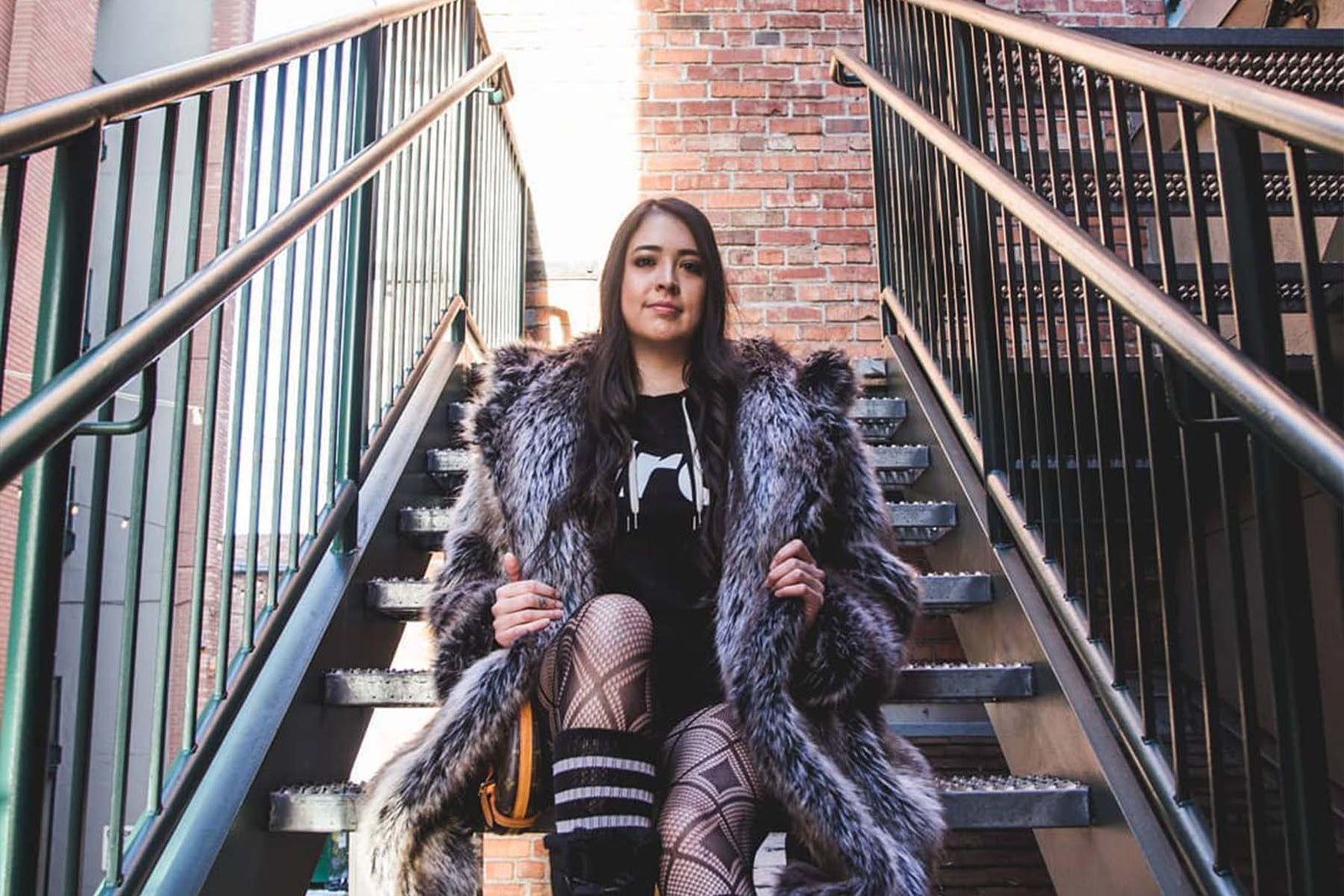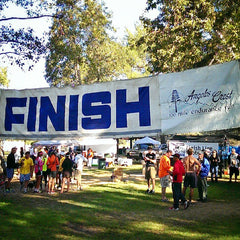FREE SHIPPING OVER $199 (CONT. US)
• Free Returns & Exchanges •
FREE SHIPPING OVER $199 (CONT. US)
• Free Returns & Exchanges •
A 40-Mile, Quarantime Hike Through New York City

We were coming down the final stretch of a grueling two-day backpacking trip, debating whether we should knock off early. It was a situation I’ve been in before—weighing the effort to summit one last peak against tired legs, blistered feet, and a shorter route back to the trailhead.
 Only this time, it wasn't a mountain my boyfriend and I wanted to bag: It was Staten Island.
Only this time, it wasn't a mountain my boyfriend and I wanted to bag: It was Staten Island.
When large swaths of the country began shutting down in response to the coronavirus pandemic this year, the official guidance from New York—and from the American Hiking Society—was to recreate as close to home as possible. I wondered where that left me and thousands of other city-bound backpacking enthusiasts. While I didn’t have any specific plans that had to be canceled, I had planned to make some, and I loathed the idea of a summer cooped up at home. Going across the country was out of the question, and even trips upstate or within the northeast could be risky, especially since I rely on public transportation. I wondered, what would happen if I took to heart the advice to recreate right in my backyard? And so I began planning an urban backpacking trip.
As with all backpacking trips, the first step was scoping potential campsites. There are two campgrounds run by the National Park Service in New York City, one in the Gateway National Recreation Area in Brooklyn, and the other in Staten Island. Thanks to COVID, however, both were closed for the season. And while thousands of homeless New Yorkers sleep rough each night, it's technically illegal to overnight in a park. We would have to stay indoors somewhere—it just couldn't be home. That would violate the spirit of the urban backpacking trek. I wanted to travel further afield than I could in just one day, and to go entirely on foot.
 Next came route planning. For a challenge, I decided to tag all five boroughs: Brooklyn, Queens, the Bronx, Manhattan, and Staten Island. (Technically, there’s no way to reach Staten Island on foot from the city except as part of the New York City Marathon, so “by ferry” would be the one exception to “only on foot.”)
Next came route planning. For a challenge, I decided to tag all five boroughs: Brooklyn, Queens, the Bronx, Manhattan, and Staten Island. (Technically, there’s no way to reach Staten Island on foot from the city except as part of the New York City Marathon, so “by ferry” would be the one exception to “only on foot.”)
That's how I came to be panting into a mask as we walked past the stone and glass cliffs that line 5th Avenue, 29 miles into a nearly 40-mile trek. Just as we were approaching the Flatiron Building, one of the iconic views along our route, a blister as large as the pinky toe it graced burst in my trail runners. I asked myself, did we really have to go to Staten Island when we could just walk home and save ourselves at least 2.5 miles?
My boyfriend and I had gotten a late start on a swampy Saturday morning. Our first stop was for brunch in Williamsburg; after all, we hadn't been to this part of the city in months, and probably wouldn't be back again soon. We carried our omelets out to eat by the East River, glinting white in the glare of the sun. The Manhattan skyline across the water shimmered in the summer haze. I could get on board with trail omelets instead of oatmeal, I thought.
 We followed the line of the river north to Newtown Creek, a tributary that divides part of Brooklyn from Queens. Far from a pristine mountain stream, Newtown Creek is so toxic with industrial pollution it was listed as a federal Superfund site in 2010. Even so, you can sometimes see fish flick through the murky waters, and we paused to watch waterfowl—too small and dark to identify from the bridge—hovering about the water’s edge.
We followed the line of the river north to Newtown Creek, a tributary that divides part of Brooklyn from Queens. Far from a pristine mountain stream, Newtown Creek is so toxic with industrial pollution it was listed as a federal Superfund site in 2010. Even so, you can sometimes see fish flick through the murky waters, and we paused to watch waterfowl—too small and dark to identify from the bridge—hovering about the water’s edge.
After crossing into Queens around the five-mile mark, I noted that this was the furthest I'd ever ventured from home—in this direction at least—on foot.
Shortly afterwards, I stopped a man carrying a full-size Osprey pack to ask him what brought him out in this heat, and learned he was supposed to be walking the Camino de Santiago in Spain, but because of the pandemic, was instead walking around Queens with a backpack full of books. It was validating to come across someone else on a mission not so different from our own, and to stop a chat for a minute about the “trail conditions.”
Hiking toward the Bronx, we darted in and out of parks we had never heard of before, filling our water bottles at drinking fountains and pausing to snarf granola bars, sprawled on our backs and gazing up at the trees overhead. At moments like these, it really felt like we were backpacking.
 Randall's Island, between Manhattan, Queens, and the Bronx, was a delight. The pedestrian path runs between a long, gently-curving line of stone arches (in reality, cement foundations of the Hell Gate Bridge) that glowed gold as canyon rocks in the late afternoon sun. We walked on into the Bronx, heeding warning signs about poison ivy alongside the trail. Energy flagging, we then trudged into Manhattan, where live jazz spilling out of a park made us pause and linger in the twilight, appreciating the city we hadn't seen this much of in months.
Randall's Island, between Manhattan, Queens, and the Bronx, was a delight. The pedestrian path runs between a long, gently-curving line of stone arches (in reality, cement foundations of the Hell Gate Bridge) that glowed gold as canyon rocks in the late afternoon sun. We walked on into the Bronx, heeding warning signs about poison ivy alongside the trail. Energy flagging, we then trudged into Manhattan, where live jazz spilling out of a park made us pause and linger in the twilight, appreciating the city we hadn't seen this much of in months.
Eventually we made our way to our shelter for the evening, a hotel in Upper Manhattan. The shower did its best imitation of a waterfall and flooded the bathroom, twice. I drifted off to the sound of banging down the hall—almost like animals rustling in the night.
We got an earlier start Sunday, summiting the highest natural point of Manhattan (elevation 265 feet) in Washington Heights before stopping for coffee. We zigged over to follow the greenway along the Hudson River, under the George Washington Bridge, and finally back east past National Park Service-managed Grant's Tomb and toward Central Park, although not before standing in a socially-distanced line for bagels.
Central Park was a glorious natural interlude in a largely concrete-dominated hike. We tramped along soft, winding trails and over grassy lawns, through the North Woods, around the reservoir, into the Ramble, and down a stately avenue of trees. A part of me wished it had all been like this. My feet ached from pounding the unyielding pavement all day. And city streets are both too structured—mostly straight lines and right angles—and too flexible—meaning you can often take this right turn or the next right turn or the one after that, and still go in the same general direction. What I missed most about the backcountry was not the views, because the city has those, or the physical challenges, because I found those, too, but the gently meandering paths.
Soon we were out of the trees and marching down Fifth Avenue—the shortest possible route to the ferry terminal—past ritzy storefronts like Gucci and Tiffany's. The stores were nearly empty but the front doors were often propped open for air circulation. We stepped across blasts of frosty, air conditioned breezes like frigid water crossings.
 The city streets cutting through the heart of Manhattan were the emptiest I had ever seen them on a beautiful summer afternoon—virtually devoid of tourists except for us, footsore explorers of our own city.
The city streets cutting through the heart of Manhattan were the emptiest I had ever seen them on a beautiful summer afternoon—virtually devoid of tourists except for us, footsore explorers of our own city.
At Washington Square Park we decided to press on—after all, Staten Island added less than three miles to the journey, since we would cross over, disembark, and get right back on a boat. We drank a beer while our legs rested—and eventually cramped—and the ferry slid past the Statue of Liberty. The last five miles back to the apartment were a slog, but we celebrated walking to all five boroughs by picking up three pizzas instead of our usual two.
While far from a wilderness experience, hiking New York was its own kind of adventure; sometimes it's easy to forget that the city is right at our doorstep. Taking a weekend to see more of it than we ever had before was a real privilege, and all it cost us was two days and a couple of blisters.
Written by Jessica McKenzie for Backpacker and legally licensed through the Matcha publisher network. Please direct all licensing questions to legal@getmatcha.com.
Leave a comment
Comments will be approved before showing up.
